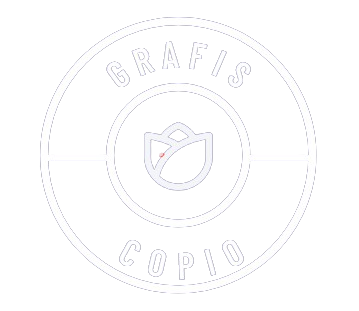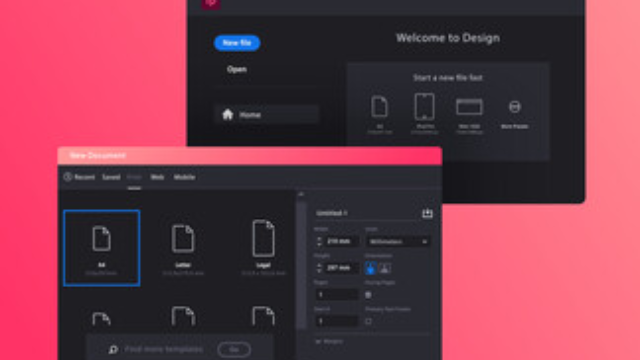Do you want to take your typography skills to the next level? In this article, we’ll show you how you can develop typography that truly stands out. From understanding the basics to experimenting with layouts, we’ll guide you through the process step by step. Learn how to choose the right typeface, establish visual hierarchy, and incorporate color and contrast effectively. Get ready to balance legibility and creativity as you test and refine your typography skills. Let’s dive in!
Understanding the Basics
How do you begin to understand the basics of typography? It all starts with familiarizing yourself with the fundamental principles and techniques of typography. Typography is the art and technique of arranging type to make written language readable and visually appealing. By understanding typography principles, you can create designs that effectively communicate your message and evoke the desired emotional response from your audience.
One of the key typography techniques to master is font selection. Different fonts convey different moods and personalities, so choose wisely based on the tone you want to set. Additionally, pay attention to font size, line spacing, and letter spacing to ensure readability and legibility.
Another important aspect of typography is hierarchy. This refers to organizing your text in a way that emphasizes important information and creates a clear visual hierarchy. Use font styles, sizes, and colors to guide the reader’s eyes through the content and highlight key points.
Lastly, consider the overall layout and composition of your typography. Balance the elements of your design, such as text and images, to create a visually pleasing composition. Experiment with alignment, spacing, and arrangement to achieve a harmonious and balanced design.
Choosing the Right Typeface
When choosing the right typeface, there are a few tips you should keep in mind. First, consider the preferences of your target audience – what kind of fonts are they drawn to? Additionally, remember that the font you choose can greatly impact the overall message and perception of your design. So, choose wisely and ensure that your font choice aligns with the desired tone and purpose of your project.
Typeface Selection Tips
To develop typography, you should start by considering the appropriate typeface for your project. Typeface selection plays a crucial role in conveying the right message and creating a visually appealing design. When choosing a typeface, it’s important to consider typeface pairing and readability techniques. Typeface pairing involves selecting complementary fonts that work well together, enhancing the overall aesthetic of your project. Readability techniques, on the other hand, focus on ensuring that the text is easily legible and accessible to the audience. Factors like font size, line spacing, and contrast should be taken into account. Remember to choose a typeface that aligns with the tone and purpose of your project while also prioritizing readability and visual harmony.
Consider Audience Preferences
When selecting the right typeface for your project, it is essential to consider the preferences of your audience. Conducting audience research is crucial to understanding their preferences and ensuring that your typography resonates with them. By understanding what typefaces your audience prefers, you can create a more engaging and impactful design. User preferences play a significant role in the overall user experience, as different typefaces can elicit different emotions and convey different messages. For example, a clean and modern typeface may be preferred by a younger audience, while a more traditional and formal typeface may resonate with an older audience. By considering the preferences of your audience and conducting thorough audience research, you can choose the right typeface that will effectively communicate your message and captivate your intended audience.
Impact of Font Choice
Consider the impact of your font choice on your audience when selecting the right typeface for your project. The font you choose can have a significant psychological effect on your readers. Different fonts evoke different emotions and convey different messages. For example, a bold and modern font may suggest a sense of confidence and innovation, while a classic and elegant font may convey a sense of tradition and sophistication. Additionally, your font choice plays a crucial role in establishing your brand identity. It is one of the key visual elements that helps your audience recognize and remember your brand. By selecting a font that aligns with your brand values and personality, you can create a cohesive and memorable brand identity. So, take the time to carefully consider the psychological effects and brand identity implications of your font choice before making a decision.
Establishing Visual Hierarchy
First, prioritize your content by using different font sizes, weights, and styles to establish a clear visual hierarchy. This is essential in guiding your audience’s attention and helping them navigate through your content. To create a strong visual hierarchy, consider the following typographic elements:
- Font Size: Use larger font sizes for headings and important information to make them stand out. This creates a clear distinction between different levels of content.
- Font Weight: Utilize bold or italicized text to emphasize key points or highlight important details. This helps draw attention to specific elements within your content.
- Font Style: Experiment with different font styles, such as serif or sans-serif, to differentiate between different sections of your content. This adds visual interest and aids in organizing your information.
Experimenting With Layouts
Now it’s time to get creative with your layouts! Experimenting with different grid arrangements and breaking traditional conventions can give your typography a unique and eye-catching look. By thinking outside the box and pushing the boundaries, you can create layouts that are visually engaging and grab the reader’s attention. So go ahead, break the rules and let your typography shine!
Creative Grid Arrangements
Start by experimenting with different grid arrangements to create creative typography layouts. This is a crucial step in developing visually stunning and impactful designs. Here are three sub-lists to help you visualize the possibilities:
- Symmetry and Balance: Play with symmetrical grid structures to create a sense of harmony and equilibrium in your typography. Experiment with aligning text and elements along vertical and horizontal lines to achieve balance.
- Asymmetry and Contrast: Break free from traditional grid structures and embrace asymmetry to add intrigue and dynamism to your layouts. Use varying font sizes, weights, and colors to create contrast and draw attention to key elements.
- Layering and Overlapping: Explore overlapping elements and layering techniques to add depth and dimension to your typography. Experiment with different opacity levels and blending modes to create visually captivating designs.
Breaking Traditional Conventions
To break traditional conventions and experiment with layouts in developing typography, you can explore new and unconventional arrangements. Typography innovation allows you to push boundaries and create unique designs that captivate your audience. One way to achieve this is through unconventional typeface usage. By selecting and combining unexpected fonts, you can create a visually striking and memorable layout.
Incorporating a 3 column and 5 row table can further enhance the impact of your design. This allows you to organize information in a structured and visually appealing manner. Consider using the table below as a starting point for your experimentation:
| Heading 1 | Heading 2 | Heading 3 |
|---|---|---|
| Content 1 | Content 2 | Content 3 |
| Content 4 | Content 5 | Content 6 |
| Content 7 | Content 8 | Content 9 |
| Content 10 | Content 11 | Content 12 |
| Content 13 | Content 14 | Content 15 |
Incorporating Color and Contrast
First, consider using a limited number of colors with high contrast to effectively incorporate color and contrast in your typography. This approach not only enhances the visual appeal of your design but also has a psychological impact on the audience. Color psychology plays a significant role in conveying emotions and messages through typography. By carefully selecting colors that align with your message, you can evoke specific feelings and create a memorable experience for your audience.
To create imagery in the audience’s mind, here are three sub-lists to consider:
- Contrast: By using contrasting colors, you can make your typography stand out and grab attention. For example, pairing a dark background with a vibrant, complementary color for your text can create a visually striking effect.
- Hierarchy: Utilize different colors to establish a hierarchy within your typography. This helps guide the audience’s eye and highlights important information. For instance, using a bold, contrasting color for headings can make them more noticeable and distinguishable from the body text.
- Accessibility: It’s crucial to ensure that your typography meets accessibility standards. Consider using colors that have sufficient contrast to be easily readable, especially for those with visual impairments. Tools like color contrast checkers can help you determine if your color choices meet the required accessibility guidelines.
Balancing Legibility and Creativity
How can you achieve a balance between legibility and creativity in your typography? When it comes to typography, finding the right balance between legibility and creativity is crucial. You want your text to be visually appealing and unique, but at the same time, it should be easy to read and understand. To achieve this balance, there are a few typography techniques and legibility strategies you can employ.
First, consider the font you choose. Opt for a typeface that is legible, with clear letterforms and distinct characters. Avoid overly decorative or elaborate fonts that may sacrifice legibility for creativity. Additionally, pay attention to the size and spacing of your text. Make sure the font size is appropriate for the medium and consider adjusting the letter-spacing and line-spacing to enhance readability.
Another strategy is to use hierarchy and contrast. By varying the size, weight, and color of your text, you can guide the reader’s eye and emphasize important information. However, be cautious not to overdo it, as too much contrast can hinder legibility.
Lastly, consider the context in which your typography will be used. Different mediums, such as print or digital, may require different legibility strategies. Adapt your typography accordingly to ensure optimal readability.
Testing and Refining the Typography
Now, it’s time to test and refine your typography to ensure it meets the desired balance between legibility and creativity. Testing techniques help you evaluate how your typography performs in different contexts, while the refining process allows you to make necessary adjustments for optimal results. Here are three sub-lists to guide you through this crucial phase:
- Evaluate legibility:
- Test your typography across various devices and screen sizes to ensure readability.
- Experiment with different font sizes, line heights, and letter spacing to find the right balance.
- Consider the background color and contrast to ensure the text stands out clearly.
- Assess creativity:
- Analyze the visual impact of your typography on your target audience.
- Seek feedback from others to gauge their perception and emotional response.
- Experiment with different font styles, weights, and colors to convey the desired mood or tone.
- Iterate and refine:
- Make adjustments based on the feedback and insights gathered during testing.
- Fine-tune the typography to enhance legibility and strengthen the creative expression.
- Continuously evaluate and refine your typography as your project evolves.



